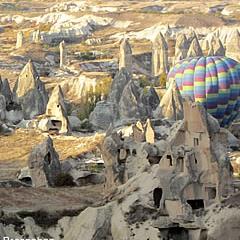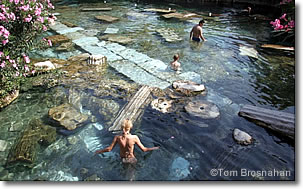Music is a form of expression that has been a part of the world for centuries. With time, creativity and way of life have grown to challenge traditional music, but there is always an interesting experience in enjoying both traditional and modern music.
In Turkish culture, the making of music is with different instruments evolved with improved technology. Some of the culture-specific tools you should expect are the zed flute, bagpipe and more.
Music from Turkey is mainly made with Turkish elements including partial influences that range from Arabic, Persian, Balkan, Ottoman and the central Asian Folk music. The trend in music improves with its origin going back to the 1930s as westernization takes over the world. There are different genres of music played in cities and towns as a way of enjoying vibrant local music and supporting their regional music.
Over the years, the Turkish music world has evolved thanks to the open economy and society that supports Aksu promoting pop music. In the 1990s, the development of alternative Turkish rock, hip hop, and rap, electronica and dance music transformed music in Turkey entirely.
Traditional Turkey Music
To begin with, let’s have a look at some of the exciting conventional music you should expect in Turkey.
Filled with sputtering rhythm, Turkey’s traditional music shares the country’s lucrative culture expressing some of the skillful and provocative nature of the country.
Brief history
In early 1930, .Mustafa Kemal Ataturk transformed the world of music in turkey entirely, by providing a speech that led to the banning of Alaturca music. The only music that was acceptable to the public was the one following the principle of Western tonal music.
Due to this act, most of the Turkish composers were educated abroad and came back to teach classical music from the western way of writing to the playing of music. By 1924 all had changed with Orchestra giving free performances in schools specifying in music education.
The introduction of new instruments like trumpets, pianos and saxophones in the cultural centers and villages paved the way for a new era in music. By the 70s, Arabesque music dominated the area with most popular Turkish musicians adapting to this type of music.
Folk Music
Turkish folk music is mainly a combination of district cultural values and civilizations that were in Turkey. This was one of the most popular music in the Ottoman Empire Era. The introduction of Turkish folk music to air came in 1960 with some names like Neset Ertas becoming even popular.
Türkü as the folk songs is said to have originated from music traditions in Turkey. Şarkı is the folk songs which originated from all other songs, which includes different music. This type of music is played with various instruments including cumbus, baglama, Kabak Keane and kemenche.
The regional folk music is accompanied by folk dances which vary from one region to another. In turkey, this type of music is viewed as the music for the people.
Kanto Music
With the massive influence of the Italian theatre and opera in Turkish culture, Kanto music came to light as one of the songs sung between acts. These are the solos or duets sung based on traditional eastern makam. They are usually performed with western instruments to spice up the experience.
This type of music was first introduced in 1922 in musical theatres in Galata. The Kanto singers were also very proficient composers coming up with emotional and extraordinary samples of melodies.
Presently, Kanto is labelled as anything outside the usual trend. Moreover, music played with varying instruments and free rhythmic is labelled Kanto. It is more like a forerunner in present-day pop culture.
Modern Music
The birth of western culture in Turkish music paved the way for the most popular styles and music like rock, jazz, roil and even tango. Presently, hip hop, heavy metal, and reggae also dominate the world of music in Turkey.
Sezen Aksu was one of the stunning contributors to the unique Turkish pop music. In the early 50s and 60s, she was the most motivated advocate of Turkey to enter the Eurovision song contest. Modern music in Turkey is filled with exciting rhythm and style.
Turkish Hip Hop
Turkish hip hop came from a group of a migrant worker community in Germany. The music engaged with the young generation, and by 1995 the Turkish German community came up with a hip hop crew called Cartel.
Presently, hip hop is enjoyed by the young generation widely with Saian, Hayki and salvo as some of the famous figures in this type of genre.
Turkish Rock
By the late 1960s, rock music made its way into the hearts of Turkish individuals, with Popular USA and UK bands dominating the area. This was when rock and folk came as one forming the Anatolian rock (Turkish rock). Nowadays, different groups share this type of music with the world.
Traditional and modern music in Turkey hits the sky with the most refreshing advances over the years. Only the future will tell the changes this fantastic music will take.
FOLK DANCE OF TURKEY
Turkey is known for its sophisticated culture that reflects in various dances. These folk dances are standard at wedding ceremonies, national and regional festivals, meetings like the ferfene, yaren talks and many more.
Frequently, the dances are in open areas, but they can be shown in closed areas as well. Here, people enjoy themselves, exploring the wide variety of dance moves from different regions.
The standard form of dances you can come across is the line dance. Generally, there are numerous flock dances which are performed inconsistently to reflect the rich culture from every region. These dances include the Halay from the East and Southeast, Konya and Leziginka where the Horon dominates the area; the Hore is from Thrace, Zeybek from Aegean and Bar from Erzurum.
Their costume and way of presentation are imposing for any curious mind.
History of the Folk Dance in Turkey
Without a glimpse of the Ottoman Palace, the history of the Turkish dance is never complete. At the beginning (the sixteenth century), the dances started as saloon dances which were seen in ceremonies and celebrations for the rulers of Europe. The Hippodrome was a typical stage to most spectacular performances in the Ottoman times. Here, villagers from around the palace came to perform their dances.
Given the different cultures from the various districts, the dances grow separately with each region presenting different dancing skills.
Despite Westernization becoming a massive part of the significant changes in Turkey, they still preserve their culture by ensuring their dance is a part of their lifestyle. Moreover, in turkey, dance is analyzed as a cultural element, where people go to dancing schools to learn these dances.
Here are dominant Turkish dances you can come across from the rich culture in Turkey.
Bar
From Eastern Turkey, the Bar is a structured formation dance that is performed by groups in open areas. It is presentable by both the male and the female gender.
In this dance, people move side by side while Turkish music fills the air with utmost skill from the talented instrumentalist. People often wear costumes when performing this dance, to bring out the native Turkish style.
Zeybek
As an Aegean dance, the dance is filled with colorfully dressed dances called EFe. Men mainly dance a symbol of courage and heroism. It is a traditional dance in Western Anatolia, with the music played varying in tempo, from slow, fast and eventually high-speed. Generally, the measures of the dance are from 9/2 to 9/8.
Horon
The Horon is a uniquely crafted flock dance, which is entirely different from other dances from some parts of Turkey. Horon which comes from the Greek word Choros, meaning dance, is a dance in the Black sea region in present Turkey. The dance is characterized by short strips, with a unique tempo, rhythm and measure from all the Turkish dances. It is performed in groups measuring 7/16 since their melodies are perceived to be very fast. Moreover, it’s challenging to use any instrument to pull through this dance. The dancers are in black with silver trimmings, with their arms linked, quivering to the vibrations of the kemence.
Hora
You will find the Hora dance in most wedding ceremonies. The dance is structured with fast performance and a dominant measure of 9/8. The dancers bring out a frenzied environment that suits a wedding ceremony at the same time promoting their culture.
Halay
Performed in Eastern, southeastern and Central Anatolia, this is an exotic Turkish dance with vibrant figure and structure. The dance is presented with a drum-zurm and a kaval to maintain the constant rhythm for the dancers to excite the crowd.
This is the leading Turkish dances that are common in Turkey. Nevertheless, there are numerous dances in Turkish that you can explore.
Other Folk Dances in Turkey
Kasik Oyunyu
This is a dance performed from Silifke to Konya. It is performed by both male and female dancers, where dancers use a wooden spoon to make a danceable rhythm, at the same time dancing to the music.
Kolbastı
This is a traditional Turkish dance among the youth.
Samah
Astonishingly, this is a dance that is performed with no rhythmic instrument, and its melodies measure up to 9/8. The dance usually takes a worldly turn with references to suppression and sublimation of desire.
Shiksaray
Shiksaray is a Turkish dance, which is believed to have originated from the Black sea region.
Van and Adiyaman
Van and Adiyaman are the most frequently dance styles that have grown popular in Turkey. They are performed with various groups in different ceremonies to ignite the dull spirit of the crowd.
- Various dance groups are known to perform outstanding dances, with exciting performances, among them is the Caucasian dance group. The caucasian dance group is a specular dance group in Turkish dance performance, serving as a must-watch experience for most visitors.
Explore the Turkish culture with their amusing dances to leave your spirits lifted. You can never get enough in this beautiful culture.





